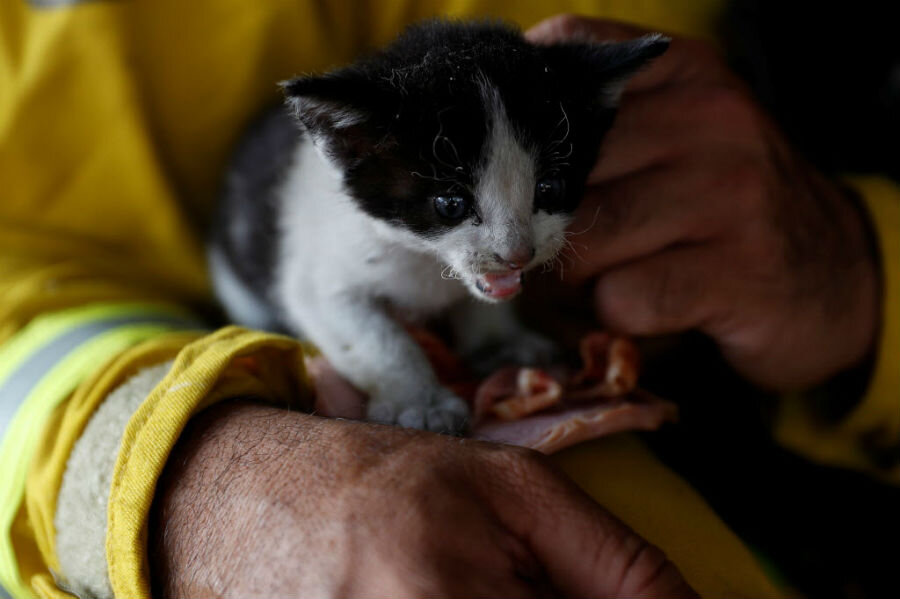Did the Vikings help distribute cats around the world?
Loading...
Cats have been constant companions to humanity for thousands of years. Yet scientists know remarkably little about their origins and their spread across the world.
Finally, the veil of mystery around the origins and spread of ancient cats is beginning to lift. The first large-scale genetic study of domesticated cats has revealed a huge amount of information about how early feline companions boarded boats that would take them around the world, hitching rides with all sorts of ancient cultures, including the Vikings.
Cats first began developing an affinity with humans around the dawn of agriculture, some 12,000 years ago. The study, presented at the 7th International Symposium on Biomolecular Archaeology in Oxford, Britain, suggests that the first of these domesticated cats were descended from wild cats that would chase small rodents in fields planted by early farmers. These farmers would have encouraged this behavior, and eventually cats would be taken into homes to become family pets. The Ancient Egyptians took a particular liking to the creatures, going so far as to worship them, cover them in jewels, and even mummifying them in the manner of pharaohs after they died.
From their original breeding grounds, Egyptian cats were taken aboard boats to deal with mice and rats that often infested ships in the region.
"We found for the first time that in prehistoric times cats from the Near East and, in classical times, from Egypt, accompanied people on their journeys, thereby conquering the Ancient World," Eva-Marie Geigl of Institut Jacques Monod, one of the researchers on the study, told ABC. "They were the ancestors or our present-day domestic cats all over the world."
The study analyzed the mitochondrial DNA from the remains of 209 cats from across Europe, the Middle East, and Africa. The cats lived anywhere from 15,000 years ago to the 1700s. Cats that shared Egyptian mitochondrial DNA, which is passed down only on the mother's side, were found as far north as a Viking site in northern Germany dating between the eighth and eleventh century.
The study also discovered that the blotched coats present in tabby cats did not occur until the Middle Ages.
"There are so many interesting observations," Pontus Skoglund, a population geneticist at Harvard Medical School in Boston, Massachusetts, who was not involved in the study, told Nature. "I didn’t even know there were Viking cats."
Vikings were well-known for conducting raids across Europe, and they probably brought their cats with them. Jes Martens from the Cultural History Museum in Oslo, Norway, told ScienceNordic that cats were an important part of Norse mythology.
"Freja, the goddess of love, had two cats that pulled her carriage. And when Thor visited Utgard, he tried to lift the giant, Utgard-Loki’s cat. It turned out to be a serpent, the Midgard Serpent, which not even Thor could lift," said Martens.
While cats may have conquered the high seas with the Vikings, it is unlikely that Norse peoples held the same reverence for the felines as the Ancient Egyptians, according to Tech Times. Early Norse peoples would use cat skins for warmth, a necessity in the cold, northern winter.
The genetic study is the first of this scale to understand the history of the internet's favorite animal. Despite the ubiquity of the felines around the world for thousands of years, cats lag far behind dogs in terms of genetic research, due in part to long-term breeding of dogs over the past few centuries, and perhaps a prevalence of "dog people" in the scientific community.
Dr. Geigl, however, doubts that dogs are more popular among scientists, insisting that the field of feline study is merely underfunded.
"We can do it, too," she told Nature. "We just need money."








